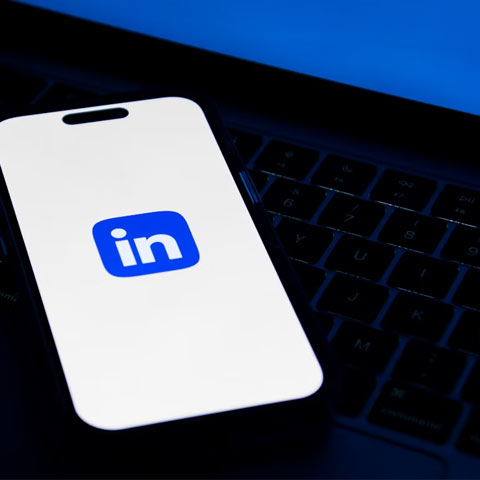27 Reasons to Use Branded Games in Your Marketing


Keen to learn more about the what, where, when, and why of using branded games in your marketing strategy? You’ve come to the right place!
Explore our super-duper list of reasons below and feel free to get in touch if you have any questions!
1. Establish connections
For many brands (and marketing teams), the aim is to establish positive emotional connections with customers. Whether it’s through the reliability and consistency of their products and services, or experiences that leave a lasting impression, it’s all about the feel-good factor.
A good game can deliver that feel-good factor in abundance. When tied to your brand, it provides a fun and interactive experience that players will remember.
2. Raise brand awareness
For marketers, the brand awareness stage is all about having people remember some of the basics that you want to get across. We’re talking things like your business name, information about products and services, and just generally who you are and what you do.
This is typically achieved through strategies such as advertising, partnerships, influencer marketing, content marketing, referral schemes, and – you guessed it – gamification.
By incorporating your branding into a fun gaming experience, players will familiarise themselves with your name, logo, and any products or services that you’re giving away in the form of prizes.
3. Boost brand engagement
In a world full of seemingly endless options for consumers, developing genuine brand engagement could be what sets you apart and ensures your longer-term success. The good news is you have more opportunities than ever before to get closer to the people who love what you do.
Games allow you to show your fun side and provide a fun experience that builds trust and creates connections. Outcomes of this include increased loyalty from consumers, word-of-mouth marketing, higher staff and customer retention, and the ability to have a positive influence on purchase intentions.
4. Grab attention
It should come as no surprise that games are a highly engaging and entertaining format. When compared with other types of marketing and traditional advertising channels, they’re much better at grabbing our attention and getting us to interact.
For brands, this means that in-game branding and messaging are far more likely to land with a target audience. Instead of 30-second ads that people can’t wait to skip, you could be working with engagement times of 10, 20, or 30+ minutes per player. In some cases, you could even be looking at well over an hour on average. You read that right!
5. Build community
Appealing to our most basic human instincts, games provide a powerful way to connect, foster feelings of positivity, and create a genuine sense of community. They bring people together through a competitive element that also sees players help one another out by sharing tips on gameplay.
From a brand and marketing perspective, the inclusion of leaderboards and sharing functionality will enable your audience to spread the word with their friends and networks. This can generate a real buzz around your campaign, with your most engaged players becoming dedicated brand ambassadors in the online spaces where you’re aiming to pick up more followers.
6. Show your fun side
Games transport us to another world where we get to play, be adventurous, and allow ourselves to be entertained. Simply put, games are fun!
For many B2C brands and their marketing teams, it’s a no-brainer to try things that are fun and engaging for their consumers. But what about those larger companies or B2B businesses where personality can get a little lost? Where everything’s a little, well, corporate?
We’re firm believers that if you have an audience you want to connect with, games can work for you. From using games in place of Christmas e-cards to running a fun competition to thank staff and suppliers at the end of a long year, it’s absolutely possible to achieve your B2B marketing goals with a branded game.
Our clients include insurance brokers, financial institutions, construction firms, and energy brokers, to name a few. If you’re interested in learning more about how a branded game could work for your B2B company, download our free B2B ebook full of tips and tricks to help get you started today (we also have a version specifically for B2B tech companies!).
7. Be entertaining
If brands want to stand a chance of engaging with customers in any sort of meaningful way, they need to entertain. Games, with their competitive elements that feed our innate desire to play, are about as entertaining as it gets.
With an estimated 3.1 billion people playing video games worldwide, the chances are a large proportion of your audience are already entertained by this medium. The best bit? Cost-effective games are now accessible to any brand looking to dip their toes in the water.
8. Have broad appeal
Gone are the days when video games were the privilege of teenagers playing on consoles in their darkened bedrooms. Following the dramatic rise of the smartphone, which in turn has led to casual gaming being one of the most popular mobile activities, the traditional ‘gamer’ stereotypes have been shattered.
Across the five key European markets (France, Germany, Italy, Spain, UK), 50% of the population aged 6-64 play video games (ISFE, 2021). Of all European video game players, 47% are women and the average age is 31.3 years old.
Even those who say “I’m not much of a gamer” are likely to play games more often than they realise. For brands, the reasons to get into gaming and appeal to a broad range of demographics seem to be simply overwhelming.
9. Be present across platforms
These days, our modern lives play out across multiple platforms and devices. From mobile phones and tablets to laptops and desktop computers, the successful brands are those that manage to meet their audience in as many places as possible.
Online games allow you to connect with clients and customers in a variety of digital spaces. When the games are browser-based and responsive, it becomes even easier to play them across a range of desktop and mobile devices.
This is pretty important when you consider that, in 2022, mobile games accounted for 50% of the global games market ($92 billion out of $184 billion).
10. Extend your reach
When people enjoy things that are fun and entertaining, they tend to share them with others. If your branded game can be that thing, it opens up a whole world of possibilities in terms of organic reach (especially if combined with a good prize competition).
Browser-based games hosted at a specific URL, which are fun and easy to play, are perfect for sharing. They can be reposted across social media, included in an email, or linked to from websites.
For social media in particular, sharing buttons in your game will also allow your players to share their scores directly to a range of platforms and challenge others to beat them on the leaderboard.
11. Improve message retention
When planning your marketing campaigns, there’s always going to be a clear message or through-line that you want to communicate. Of course, this can be achieved through ads and other common forms of digital marketing, but just imagine what a good game can do to reinforce the message!
You’ve got high engagement times and repeated interactions, all driven by good gameplay that keeps players coming back again and again. With the right branding and messaging opportunities in place, it becomes an effective marketing tool that conveys the essence of your campaign in a way that’s unforgettable.
12. Increase customer loyalty
Games are a fantastic way to delight customers and encourage them to come back again and again. A memorable experience can help to inspire loyalty among players, keeping them engaged with your brand and giving them a good reason to spread the word to others.
Increased loyalty ultimately leads to repeat business and higher rates of customer retention, thereby boosting revenue and helping to cut costs through the reduced need for marketing and advertising.
As most companies will know, it’s less expensive to retain an existing customer than to go out and acquire a new one.
13. Reactivate lapsed customers
Got a mailing list full of unengaged contacts that you’d like to reconnect with and remind about all the wonderful things your company is up to? A fun game competition could help you do just that!
With a targeted campaign that encourages people to play for prizes or unlock special offers, you can re-engage them and put your brand back on their radar. This customer re-engagement also works throughout the duration of the campaign itself – think daily prizes and winner announcements that inspire people to come back and play each day!
14. Set up campaigns quickly
Building custom games from scratch involves time and money, with a lot of hard work involved in developing, testing, and launching it to a public audience. Some of the big-name brands might go down this route, but what about those who are less blessed in the time and budget departments?
The good news is there are ready-to-go options available for a quick turnaround, whereby the game has already been built and you just need to add the finishing touches. Simply pick the game you want, add your logo and campaign messaging, and you’ll be up and running with your very own branded game in no time!
15. Stand out from the crowd
If you operate in a sector where every small advantage counts, games could be the thing to supercharge your next marketing campaign and set you apart from the competition.
And, contrary to popular belief, games have multiple use cases and can be applied across a wide range of industries and business types. Be it retail, hospitality, construction, finance, travel, tech, or B2B companies, you’ll be surprised to learn about all the different ways in which games can support your marketing.
16. Make a splash at events
From grabbing attention and driving footfall to breaking the ice and capturing GDPR-compliant leads, trade show games are a powerful tool to support your wider objectives at events.
Having a branded arcade machine or an iPad running a competition offers something interactive and fun on an exhibition floor, helping you to cut through the noise and be memorable when following up post-show.
Keen to learn more? The Event and Expo Games Guide is an excellent (and free) resource to help you start planning today!
17. Increase employee engagement
It’s not all about consumers and clients – games can also be used to increase employee engagement within your organisation.
Perhaps you’d like to thank staff and reward them for their hard work at the end of the year? Maybe an online competition would be a fun way to have colleagues compete with one another across a shared leaderboard? Games can help you achieve all this and more.
18. Connect remote teams
The Covid pandemic has been a disruptive force that accelerated a shift towards hybrid and fully remote working. While remote teams can function perfectly well – and in many cases even thrive – at the end of the day there’s a human element missing that can take its toll on individuals.
Could games provide one piece of the puzzle when it comes to bringing people together and bolstering a sense of belonging? We certainly think so! They’re not a quick-fix for all the challenges arising from the new world of work, but they’re certainly a fun way to encourage interaction and put smiles on faces.
Check out these examples of gamification in HR.
19. Lean into seasonality
We all know that Christmas is big business in the world of marketing, with huge sums often spent on campaigns that tap into the festive spirit. But what about those other times of year when you could be putting your brand front and centre?
Think Valentine’s Day, Easter, Halloween, and Thanksgiving – all of which present timely opportunities to connect with your audience. By immersing players in an interactive environment that supports a seasonal campaign, games can provide an ideal platform to engage and entertain.
What’s more, with ready-to-go options that have already been customised to match your desired theme, a lot of the heavy-lifting has already been done!
For a shining example of a multi-game seasonal campaign, check out our Quidco case study.
20. Diversify your channels
Technology seems to change at lightning speed, with a constant influx of shiny new tools promising to be the thing that will revolutionise your marketing. In reality, it’s unlikely that one single product will ever be a catch-all solution to the problems marketers face.
It’s important to mix things up, diversify your channels, and explore different approaches to find what works for you. Online games are a fantastic way to try something new with your audience in a way that won’t break the bank.
21. Collect data
Online games can be used as a way of capturing data through a leaderboard-based competition. When players submit their score, they can be asked to provide information such as their name, email address, and whether or not they’d like to receive future communications from you.
Since the GDPR came into effect in 2018, it’s been important for brands to offer relevant and engaging content that ensures compliant, permission-based opt-ins to marketing databases. If you can make that process fun and positive, you’re more likely to gain quality data and leads.
Important: it’s much better to ask for details after someone has played the game and wants to submit their score – don’t create unnecessary barriers to play!
22. Drive traffic and sales
In addition to all the other value they offer, games can also be used to generate direct traffic and sales through special offers that reward players for their persistence and re-engagement.
Whether it’s links to promotional landing pages that are only unlocked by collecting enough coins, or discount codes that are only revealed when advancing to the next level, these exclusive features provide a real incentive to play.
23. Promote your app
Have you got an app that you want to promote and encourage your audience to interact with? A game can help with that!
Whether it’s used as a motivating factor to drive downloads in the first place, or for a seamless experience combining discounts, giveaways, and purchase opportunities, games are a fun way to put your app front and centre.
24. Get value for money
There was once a time when it cost an arm and a leg for a company to build its own branded game. Unless you had the big bucks, it wasn’t something you could realistically imagine doing.
Today, games are available at a wide range of price points, allowing marketing departments (and agencies) of all shapes and sizes to get in on the action. Instead of investing in game development, you can invest in your brand and reap the rewards of the engagement on offer.
25. Educate your audience
We know games are fun, but they can also act as effective teaching tools to share knowledge.
Whether it’s educating consumers about products or special offers, onboarding new staff in your organisation, raising awareness of an important cause, or helping to make research more accessible to a wider population, gamification makes learning more enjoyable.
26. Enhance your existing gamification
You may not have thought about it, but there’s a good chance you’re already using gamification in your marketing. At the very least, you’ll have encountered many examples of it in the wild.
It might take the form of loyalty points cards for shops and restaurants, where customers are ‘challenged’ to get that free item as a reward for their spending. Perhaps it’s a feature embedded in your company staff training or sales team software with competitive leaderboards and progress achievements.
These are all subtle forms of games in business – why not add a not-so-subtle version into the mix?
27. Benefit from consumer-led interactions
As we mentioned above, we think it’s very important to remove any barriers to playing your game. This player-first, consumer-led approach shows that it’s just a bit of fun and you’re not trying to sell something or ask for data at every possible turn.
If a game is built for the brand and not the player, it runs the risk of being something that looks great but has no real gaming substance. The branded elements should complement the gameplay rather than get in the way of it, with players feeling like they’re in the driving seat and getting value from the experience.
Learn More About Peek& Poke and Win!
Want more like this?
Want more like this?
Insight delivered to your inbox
Keep up to date with our free email. Hand picked whitepapers and posts from our blog, as well as exclusive videos and webinar invitations keep our Users one step ahead.
By clicking 'SIGN UP', you agree to our Terms of Use and Privacy Policy


By clicking 'SIGN UP', you agree to our Terms of Use and Privacy Policy
Other content you may be interested in
Categories

Want more like this?


Want more like this?
Insight delivered to your inbox
Keep up to date with our free email. Hand picked whitepapers and posts from our blog, as well as exclusive videos and webinar invitations keep our Users one step ahead.
By clicking 'SIGN UP', you agree to our Terms of Use and Privacy Policy









